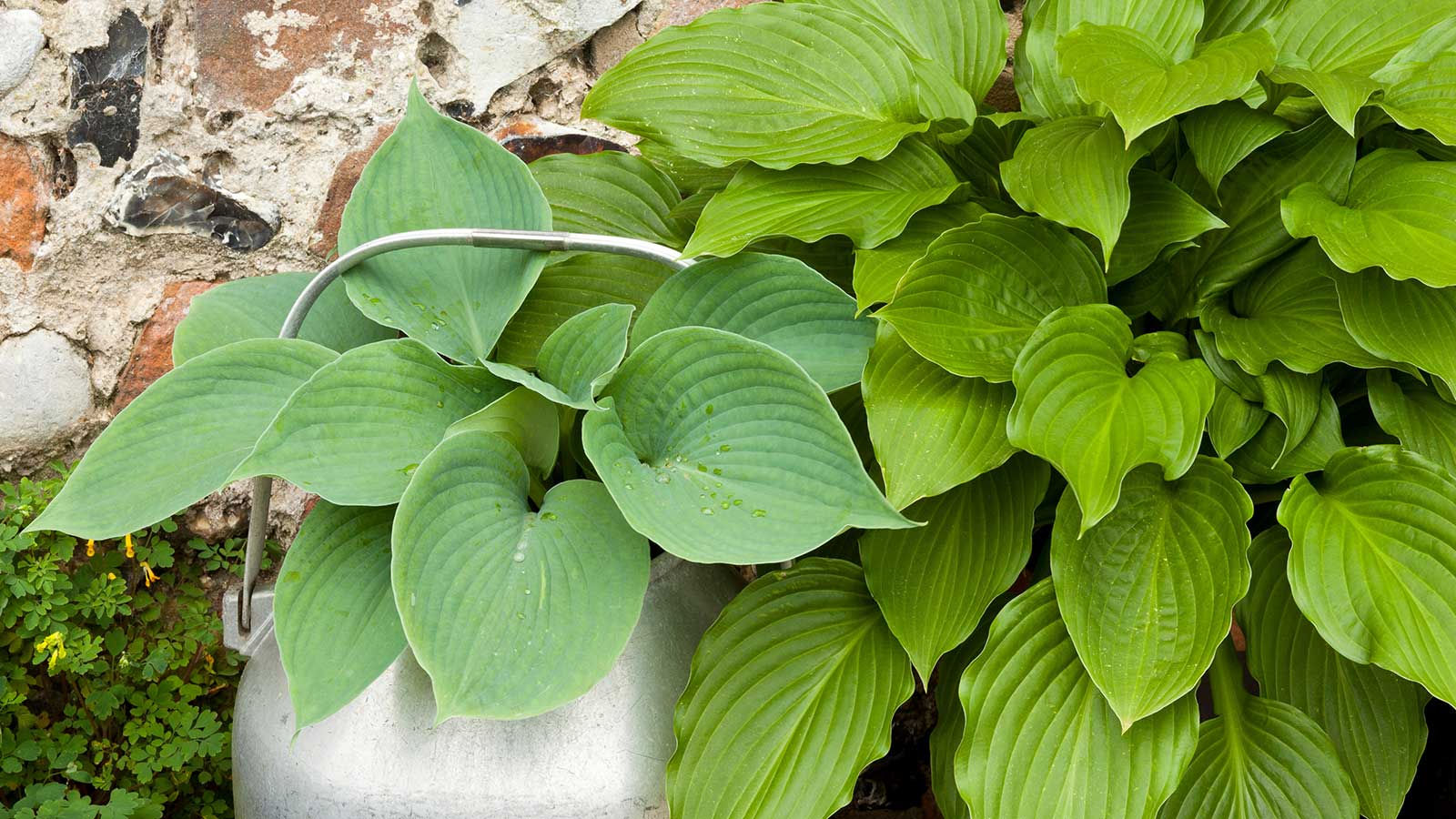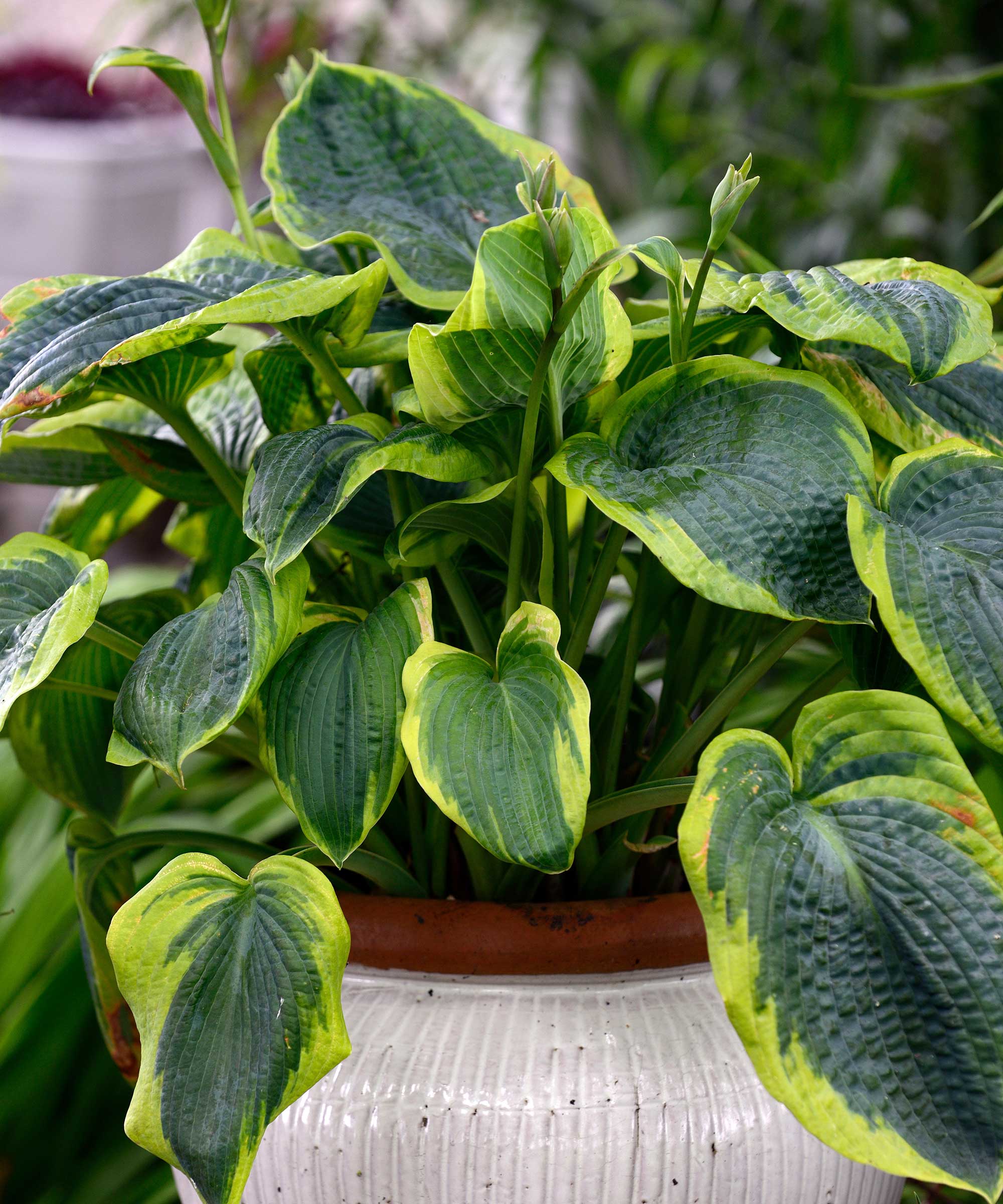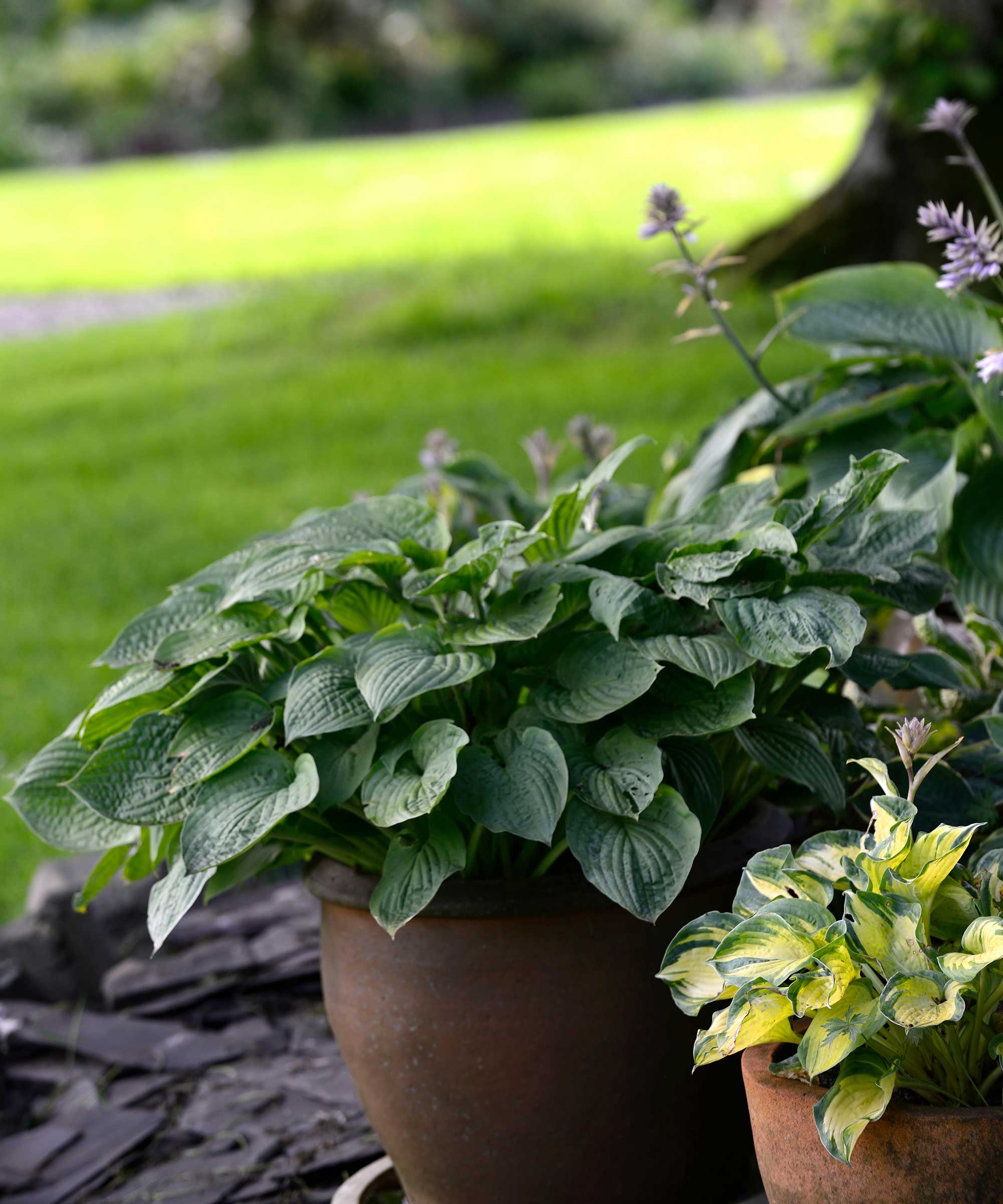
Q: I have recently moved house and have acquired a small courtyard that doesn't get much sunshine. I have heard that hostas are well-suited to shade, so would like to grow some in pots to add color and vibrancy to the space. Is there anything I need to know to ensure that they thrive?
A: You are correct in that hostas are excellent plants for shade. In fact, too much sunshine can cause the foliage of many varieties to scorch, particularly those with a bluer hue.
As long as you provide moist, nutrient-rich soil, and keep an eye out for pests, they are really easy to look after, and will come back year after year to show off their luscious leaves. But there are a few extra tips to bear in mind for the very best container gardening results.

Top tips for growing hostas in containers
Planting
Choose a large container (18in in diameter or more) with drainage holes. Plant your hosta at the same depth that it's planted in its original pot, into multipurpose compost. According to the Royal Horticultural Society, miniature varieties of hostas (such as 'Pandora's Box') will benefit from added grit and garden compost mixed into the soil.
Watering
Avoid the common container gardening mistake of under-watering your plants – they dry out much quicker than those grown in the ground. 'Once planted, keep hostas well watered during their first year and subsequent dry spells,' says Ruth Hayes, a gardening expert. Watch out for browning foliage – a telltale sign that your plants need a more regular drink.
However, don't overwater your hostas, either. Gardening expert Graham Rice recommends raising the containers on pot feet, such as these UFelice ones from Amazon, to prevent possible waterlogging.
Feeding
Fertilizing these plants can give them a boost, but watch out for overfeeding, which can cause the plants to flop over. 'It causes water within the plant cells to be drawn into the soil, thus killing the cells,' explains gardening expert John Negus. Ruth advises feeding them with a general-purpose fertilizer in spring.
Deadheading and pruning
Hostas naturally die back in the fall. Towards the end of summer, you can cut back the leaves to neaten up their appearance. Spent flower spikes can also be removed. They will put on fresh growth in the spring.

Varieties of hostas to grow in pots
All types of hostas can be grown in containers if you follow the tips above, and there are plenty of gorgeous varieties to choose from.
The 'Blue Mouse Ears' hosta, available from Nature Hills, is a popular, slug-resistant choice. Gardening expert Graham Rice describes it as 'a beautiful baby hosta with elegantly cupped blue leaves, faintly silvered at the margins.' It makes a tight clump and is a lovely pot specimen, he adds. 'There are also variegated versions, including "Smiling Mouse".'
For a more dramatic impact, try ‘Blue Mammoth’. It has large, heavily corrugated, blue-green foliage which is lobed at the base, says Graham, and 'makes an impressive specimen in a large pot on a shady patio.'
For patios that are on the sunnier side, you could try the 'Guacamole’ hosta, available from Fast Growing Trees, which, as its name suggests, has leaves the color of a ripe avocado and is less likely to scorch than many other varieties. Still, dappled sunlight is best rather than direct sunshine, and bear in mind that it's not slug-resistant.
FAQs
What pests can be a problem for hostas in pots?
Although plants are often safer from slugs and snails if they're in containers, try to avoid using pots that have lipped rims. These rims make good hiding places for the pests, notes Val Bourne, an organic and wildlife gardening expert. Use straight-sided pots instead, she advises.
It is also possible to choose varieties of hostas that are less susceptible to slug attacks, due to their thicker leaves. Examples include 'Devon Green' and 'Firn Line' hostas, available from Breck's.
Even if you manage to avoid an onslaught of slugs and snails, hostas planted in pots can suffer from another pest: vine weevil grubs, which eat the plants' roots. 'Tap the plant from its pot and look for small white grubs with brown heads,' says John Negus, a gardening expert. If you find the grubs, he suggests either washing all the soil off the roots and repotting it in fresh compost, or killing the pests with a nematode.
Should you protect hostas grown in pots for winter?
Although hostas are hardy, those in containers are more susceptible to winter damage than those in the ground, so you may wish to offer a bit of extra protection in very cold regions.
Ruth Hayes, a gardening expert, suggests fleecing or mulching the root area of hostas to keep the plants protected from frost over the winter months. Alternatively, you can put the pots somewhere sheltered, such as in a shed. It's also possible to winterize hostas by burying the pots in the ground, up to their rims, then covering the whole area with mulch.
Hostas are a welcome addition to any modern backyard, and work well in tropical garden schemes, too. In fact, why settle on just one variety? Plant a few types in a range of different-height pots that are clustered together – the display will instantly transform a gloomier spot in your outdoor living space.







